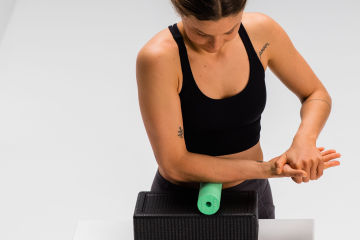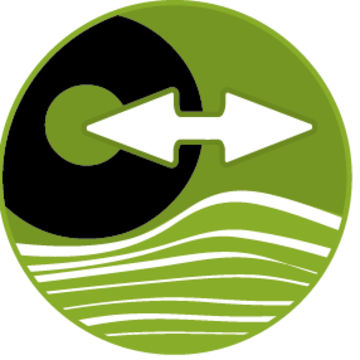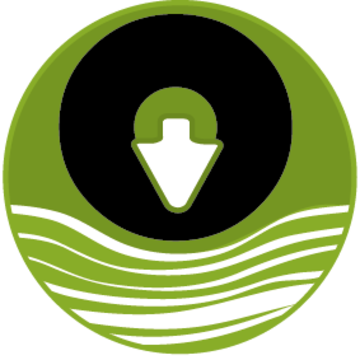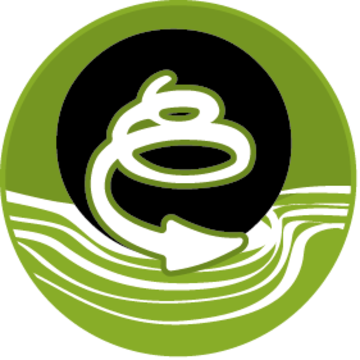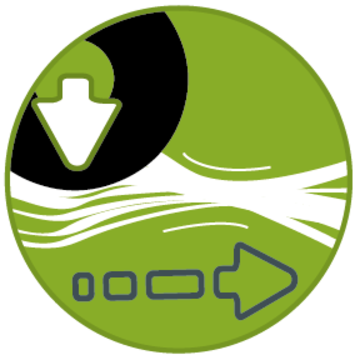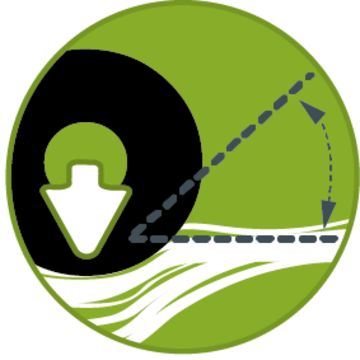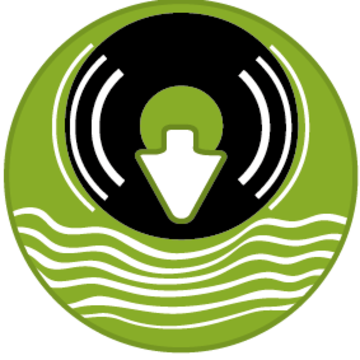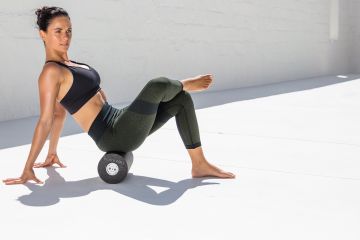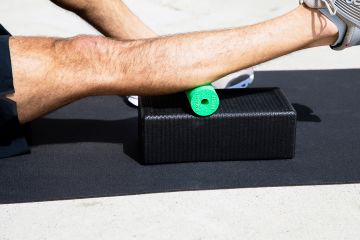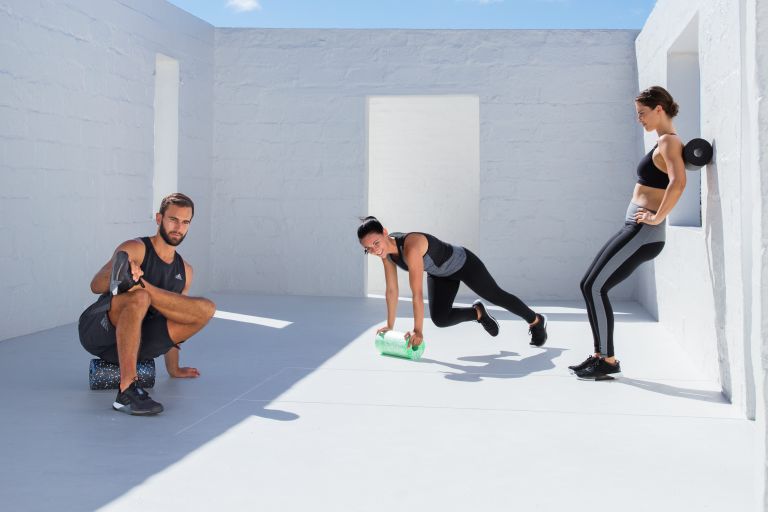
Foam Rolling – how to use a foam roller correctly

Nowadays when we talk about fascia training, most people are actually referring primarily to foam rolling; self-massage with a foam roller or fascia ball. The term “foam rolling” refers to “rolling on a hard foam roller”, or “rolling on a hard foam ball”. The brand name BLACKROLL® has become synonymous with the foam roller as a product and has even established fascia training itself as a popular practise.
Rolling on a BLACKROLL® and other fascia tools is a manual treatment technique, which almost anyone can perform themselves in order to work the fascia and muscles, and, for example, to alleviate pain. It is derived from the therapeutic technique of “myofasical release”, which can be used to regulate the tension of the connective tissue, among other benefits. Because rolling on a foam roller or a fascia ball can be performed without the help of other people, it is counted among the techniques that fall under the heading of “self-myofascial release” or “myofascial self-massage”.
Perhaps you are wondering what makes training with the foam roller so beneficial? How do you use the foam roller correctly? Is the foam roller suitable for beginners, or how correctly performed fascia training works? Here we answer your questions on the topic of foam rolling.
Why is foam rolling beneficial?
This form of training has been well-known ever since the German men’s football team used the hard roam roller in 2004, if not before. Foam rolling is therefore probably the most prominent form of fascia training. When performing self-massage with the foam roller, you apply targeted pressure and stretching stimuli on the connective tissue. This can stimulate the circulation and promote mobility. With fascia training, not only can hardenings and adhesions in the connective tissue be relieved, but you can also actively strengthen your fasciae. Regular training can make the fascial structures more elastic and tear-proof, which means you can make more efficient use of your kinetic energy and will become less prone to injury.
What does foam rolling involve?
The roller assumes the role of the therapist during self-massage. When training with the foam roller, you work your fascia using your own body weight. To do so, place the roller underneath the body part to be treated, and attempt to relax through the resulting pressure. Calmly imagine that you are squeezing out a sponge - the stagnant fluid is dispersed, and the connective tissue is reloaded with fresh and invigorating moisture. Depending on the area of the body and your personal perception of pain, this may at first prove to be a rather unpleasant challenge. As soon as you notice that the pressure has significantly eased, you can carefully roll a little further, thus working your way through the tissue, step-by-step.
Which fascia training equipment is available for foam rolling?
Many people are only familiar with the classic foam roller, and rolling longitudinally along a region of the body, for example, along the front of the thigh. Here the various fascia tools can be put to highly versatile use. This way you stimulate the various types of receptor of the fascia tissue and realise even more effective fascia training. Foam rollers come in various sizes, shapes, hardnesses and surface finishes. In addition to foam rollers, there are also fascia balls and duo balls. On account of their shape and surface finish, these are particularly well suited for areas of the body that are more difficult to access with the roller, or in order to achieve a deeper massage. This includes, for example, the lumbar, thoracic and cervical spine, as well as smaller areas of the body. The fascia ball can also be put to good use underneath the arms and legs, to apply more selective pressure to the tissue.
What effect does the rolling speed have when training with the foam roller?
When performing self-massage, you can adopt one of two rolling speeds, depending on your training objective. For with the foam roller, you can warm up the muscles prior to sport, and also promote recovery after a long day at work with restricted movement or after an intensive training session. What is crucial here is how you use the roller:
Fast rolling: activation
If the intended goal of the self-massage is short-term mobilisation, warming up and an increase in performance, you can use the roller with quick movements to warm up prior to sport, to stimulate the blood flow and improve body awareness. During the warm-up, you quickly roll over the individual regions of the body to activate them, and in so doing you stimulate the metabolism. This has a toning effect on the muscles.
Slow rolling: recovery
If you would like to relieve tension and eradicate adhesions that develop, for example as a result of sitting all day or following sporting exertion, we recommend rolling the fascia slowly after exertion. During your cool-down after a good training session/competition, or if you are experiencing pain, allow yourself some additional time and work into the individual muscle chains. What is important is that you roll very slowly indeed. Linger a little longer on spots where you feel pain. Proceed slowly through the pain threshold (good pain) and frequently position the roller at different angles, allowing various gravitational forces to act. The effect: your muscles become more effective, and muscle pain is prevented.
What foam rolling techniques are there?
Is training with the foam roller also suitable for beginners?
In short: foam rolling is suitable for all people, of all ages. There exists a foam roller to suit every person and their individual requirements. Foam rolling beginners will first have to get used to the “good pain” when rolling. It is therefore recommended that you begin with a softer roller, e.g. the BLACKROLL® MED. Depending on your level of sensitivity, the hardness can then be increased. Professional athletes are best to go with the hardest version, the BLACKROLL® PRO.
What else must be taken into account when foam rolling?
There are a few points that must be observed when performing myofascial self-massage exercises, in order to achieve optimal myofascial release. Here we have compiled the most important basic rules for you:
- Perform the recovery exercises very slowly, in a concentrated and focussed manner
- Work a section of muscle for approximately 1 to 3 minutes
- Adjust the level of pressure individually, so that you can easily withstand the pain and so that, over time, you can start to relax
- Relax the muscles you are working on as much as possible
- Breathe evenly and deeply
- Observe the contraindications, as to when you should avoid fascia training
If you are unsure whether you should train with the foam roller and how best to proceed, or if you suffer from severe pain or recurring injuries after rolling, we recommend that you consult a physiotherapist or medical specialist.


